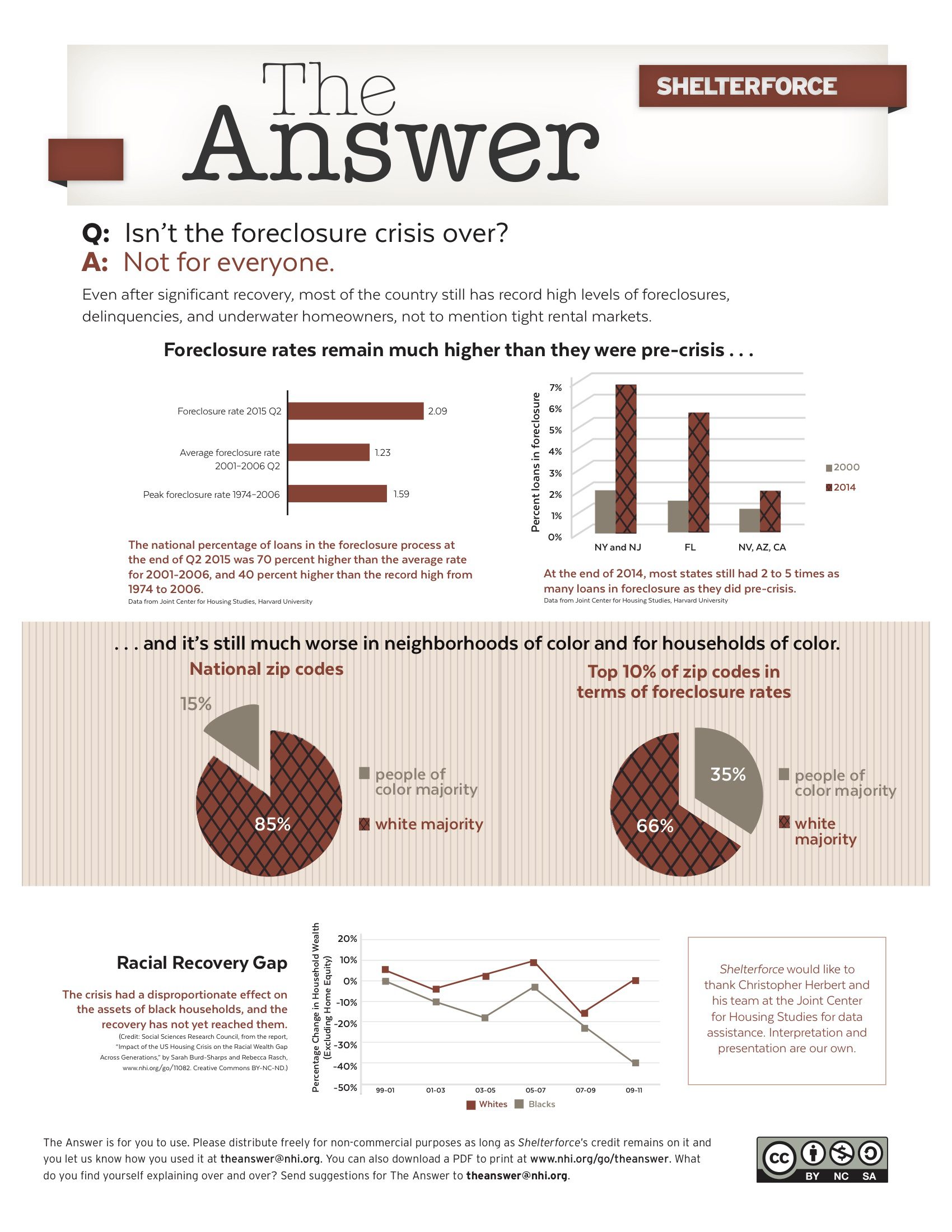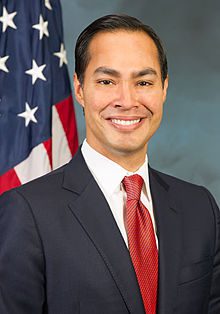
A student art exhibit opening at a charter school. Photo by the U.S. Department of Education, via flickr, CC BY 2.0
It is probably not surprising that the greatest “school choice” in American education is happening in neighborhoods and communities with the lowest performing schools. This new reality was highlighted in a recent study of school choice in Chicago by Julia Burdick-Will, a sociologist at Johns Hopkins University. Burdick-Will’s research found that in Chicago’s poorest communities, students were attending an average of 13 different schools (as compared to 2 to 3 schools for students in the most affluent neighborhoods).
Although families in affluent neighborhoods exercise relatively little school choice, that is because many of them already made a conscious neighborhood choice when deciding to move into a particular area with strong public schools—and home prices to reflect it. Nationwide, more than one-quarter of all parents report choosing their home in part based on access to schools. In the poorest communities, however, families rarely have the option to access better schools by moving to a new neighborhood or city. Parents are often frustrated with unequal educational opportunities and the slow pace of public school reform, and turn to charter schools and other school choice options as the best chance available for their children.
Charter schools can serve an important function in giving low-income families some choice over schools parallel to the choice middle-class families often have over neighborhoods. But it is important to recognize that any system of school choice can play a sorting and segregating function, favoring parents with the most time and capacity to engage with a complicated system that may have multiple barriers to entry. This phenomenon has been well documented, particularly for charter schools, open enrollment systems, and so-called school “vouchers.” To address this problem, strong affirmative marketing and coordination are needed to ensure that charter schools are open to all children, and that they do not inadvertently lead to greater poverty, disinvestment, and racial isolation in the neighborhood public schools.
However, this basic choice predicament may no longer be the most concerning issue for urban charter schools. A potentially larger concern is the impact of charters on housing markets in demographically changing communities. In an excellent new policy brief, Reed Jordan and Megan Gallagher address the question “Does school choice affect gentrification?” and, like Burdick-Will, they find evidence of expanding school choice in neighborhoods that are rapidly changing—with potentially reciprocal housing and school impacts.
In gentrifying communities, charter schools “decouple” housing location from school assignment. In theory, this decoupling can be a positive step for school and housing equity. Indeed, research finds that in districts with school integration programs that disrupt typical neighborhood attendance zone patterns, residential segregation has declined along with the decline in school segregation. However, if the break between school assignment and housing location happens without a plan in place to promote racial and economic school integration, then the results can exacerbate inequity. As Jordan and Gallagher note, “[s]tudies have observed that gentrifiers tend to put their children into select charter or public schools with other gentrifying families, resulting in little change to other schools in the area.” In her recent book, Public Housing and School Choice in a Gentrified City, Molly Makris offers an excellent case study of these dynamics at play in Hoboken, New Jersey.
Thus, the presence of charter schools can enable middle- and upper-middle-class (and white) families with children to buy into a community without having to commit to the local public school. In this way, the proliferation of charters in gentrifying neighborhoods can drive up housing prices—fueling further displacement—while doing little to integrate the neighborhood schools, to the detriment of existing residents and their children.
A similar situation can be seen in the context of older suburbs experiencing racial and economic change: the sudden appearance of charter schools in these changing communities presents an option for white and middle-class families to exit the local public school system, which soon affects perceived school quality, housing prices, and community tax base, and can sometimes lead to rapid racial transition. Myron Orfield has documented this destructive pattern in Minnesota.
School choice need not always repeat these destructive patterns. Charter schools can be positive forces for equity and integration in gentrifying neighborhoods—but only if policy solutions are in place to ensure that charters do not have unintended harmful effects on local housing markets and school systems. First, as mentioned above, strong affirmative marketing is needed to ensure that the most disadvantaged families have the opportunity to apply and be admitted to local charters. (One example from Washington, D.C., is the High Quality Schools Campaign run by DC School Reform Now.) Second, charter school authorizers should require clear inclusion metrics to compare a charter school’s student enrollment demographics with the demographics of the neighborhoods from which students are drawn in terms of family income, special education status, race, and English language learner status. Third, as emphasized in Richard Kahlenberg and Halley Potter’s recent book, A Smarter Charter, charter schools will often need to recruit from outside their neighborhood or district to bring more economic and racial diversity into the school without undermining diversity in the local neighborhood schools. Fourth, as recently argued by David Tipson, charter schools need to be good neighbors by coordinating with the local public schools and not engaging in what are sometimes perceived as “poaching” activities in nearby schools.
Finally, charter schools entering into gentrifying communities should be allowed—and in some cases required—to take the additional step of adopting pro-diversity “weighted lotteries.” These lotteries can be designed to promote diversity by assigning some applicants a preference based on educational risk factors (such as income or English language learner status) or geography. State laws regarding weighted lotteries are varied—with only a handful of states explicitly permitting weighted lotteries and many states with laws open to multiple interpretations. Federal requirements add another layer of complexity, restricting charter schools receiving federal Charter Schools Program funds to only certain types of weighted lotteries and only when explicitly permitted by the state. But despite these limitations, weighted lotteries have been useful tools for ensuring racially and economically diverse enrollment over time at schools such as Brooklyn Prospect Charter School and Community Roots Charter School, both located in gentrifying neighborhoods in Brooklyn, as well as at Larchmont Charter School and Citizens of the World–Hollywood—both located in gentrifying Hollywood, Los Angeles.
It is possible for charters to co-exist constructively with local neighborhood and magnet schools, but this work needs to be done intentionally and carefully, and with a full understanding of the housing effects of school choice policy.






These are all unlikely lifeboat strategies that distract us from the sinking ship of the racially determined concentrations of poverty within our cities. Our task is to make all neighborhoods as education friendly as those ideal white middle class ones that work so well for their children.